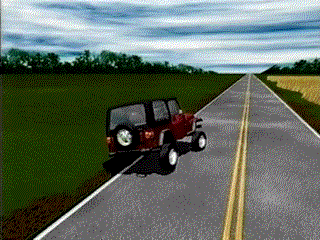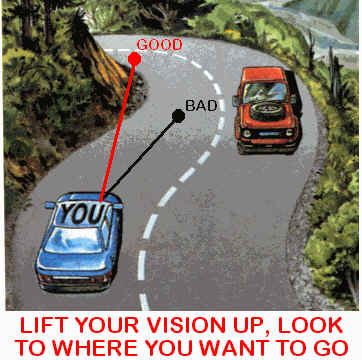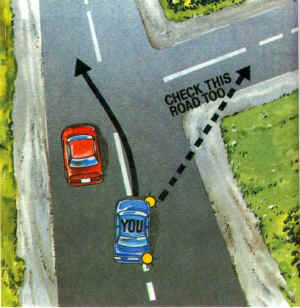Chapter 24: DRIVING ON COUNTRY ROADS
Australia has more than 800,000 km of roads, of which 323,020 km are sealed with bitumen or concrete and 313,156 km and "improved surfaces" usually of gravel, whilst the remainder are formed or cleared. That means more than 60% of Australia's roads are gravel, sand or dirt.
Crashes that occur on country roads and are often more severe in terms of damage due to the higher travel speeds and in terms of injury due to the remoteness from medical assistance.
Some of the many hazards you can face on country roads include;
- Wandering stock and wildlife
- Unmarked bends, dips and crests
- Slippery surfaces
- Grids, potholes, corrugations
One of the most dangerous driving conditions encountered on country roads is here, a dry straight section of road. What are the dangers here.
Well the biggest danger is that there are no apparent dangers.
On a winding, wet mountain road all the senses might be tuned into staying on the road. But on a dry straight road complacency creeps in, drivers are not scanning the road, the driver might be occupying their mind by trying to find a new radio station the car might be drifting in its lane.
The driver may attempt an overtaking manoeuvre but have misjudged the speed and distance of an approaching vehicle. As the overtaking driver it is far safer to acknowledge your error and slow and return to your lane, than try and accelerate to make it, this option gives you little alternatives.
If you are the driver being overtaken, hold your speed or lift of the throttle allowing the car to slow gradually, plus hold your position.
RURAL ROAD TOLL
For OECD countries, 75,000 people die each year on rural roads. In 1996, 60% of all road deaths in the world occurred on country roads.
Contributing Factors in Rural Road Crashes include;
- Speeding 39%
- Driver Fatigue 28%
- Alcohol 22%
- No Seatbelt 20%
- Wet Weather 19%
One of the underlying factors is the misconception held by people living in the country that it is city folk that die on country roads.
This is statistically not the case as: COUNTRY PEOPLE DIE ON COUNTRY ROADS
People living and working in rural Australia have been found to believe;
- It is safe to speed, especially covering long distances
- It is safe to drive if you don't feel drunk
- Seatbelts don't protect, they trap you in the wreckage
- Country drivers are better at driving longer distances
INTERSTATE DRIVERS (COMING TO QLD)
(Based on research by Barry Watson at CARRS-Q)
From 1993 - 1998 in Queensland there were a total of 180,000 road crashes (killing 2947 people). Of these 9,433 crashes involved interstate drivers (people whose address was not in Queensland).
168 of these crashes were fatal (5.7% of total)
1561 of these crashes required hospitalization of the driver.
For interstate drivers involved in crashes in Queensland the following profile exists;
- 51% of people were from NSW (34.5% from VIC)
- 87% of crashes involved cars
- 62% of crashes occurred in 60 km/hr zones or lower
- 96.2% had no alcohol involved
- 60% of crashes were deemed "at fault" by the police
- 62.5% of drivers were 25-59 years of age
As such the most common interstate driver crash involves more experienced, older, open licence holders who were at fault and the vehicle overturned.
4WD's ON COUNTRY ROADS
Just because you own and drive a 4WD, does not automatically make someone a four-wheel driver. Before going bush familiarize yourself with you vehicle and consider taking a course on 4-wheel driving.
CORNERING LINES ON COUNTRY ROADS
One very important driving skill a driver should develop is the ability to scan through corners with their eyes and read the road further ahead.
In this way a driver can predict how tight upcoming corners are before arriving at them.
OVERTAKING ON COUNTRY ROADS
Be very careful overtaking on country road when a road comes in from the right. Anybody coming down this road wishing to turn left, would only scan and give-way to the right. Therefore they would not look your way and turn out from the side road only to find you on the wrong side of the road. This side road remember may not be as defined (and easy to see) and a bitumen road, it could be a dirt road and driveway to a farm.
(Written by Joel Neilsen, Managing Director, Safe Drive Training)




